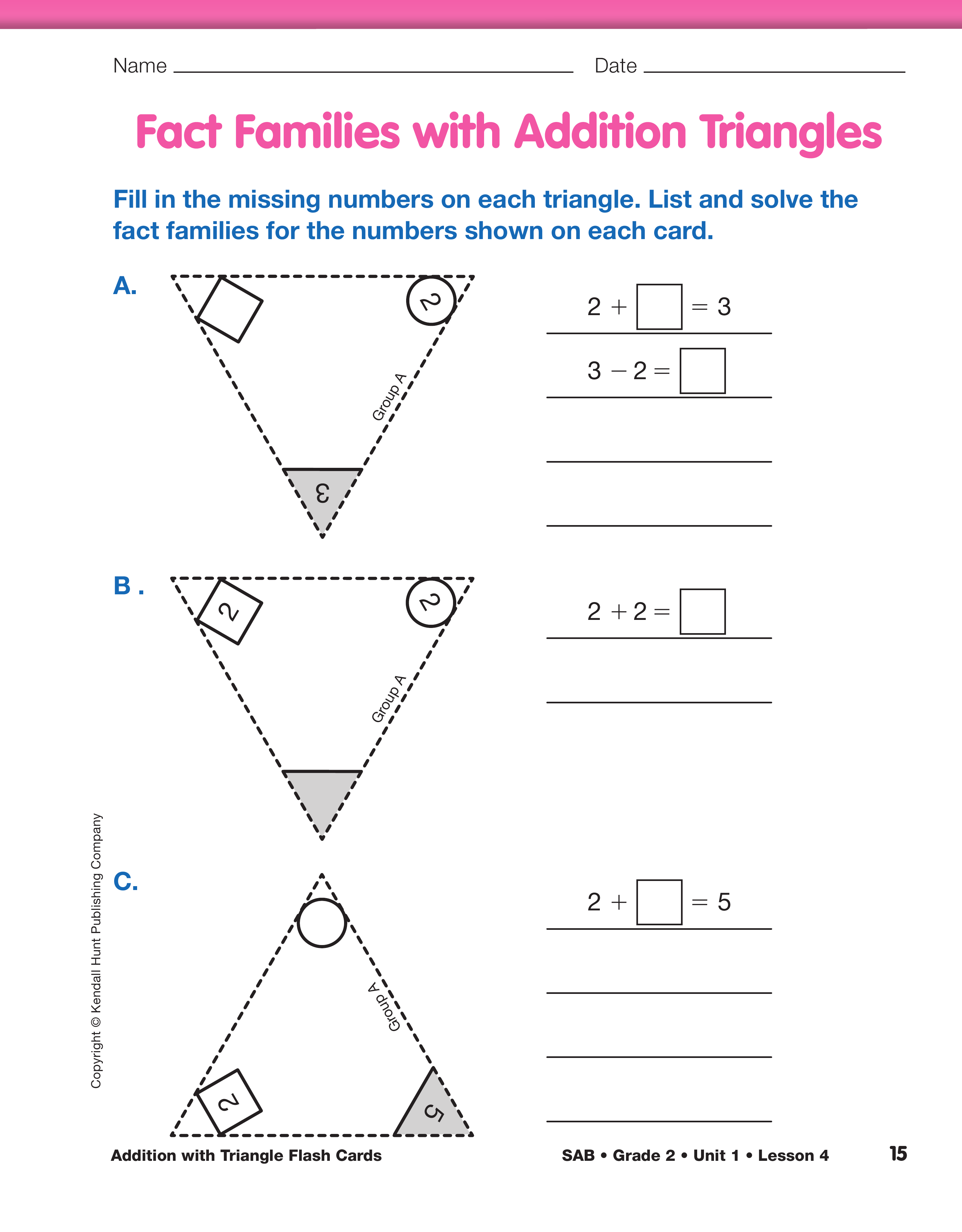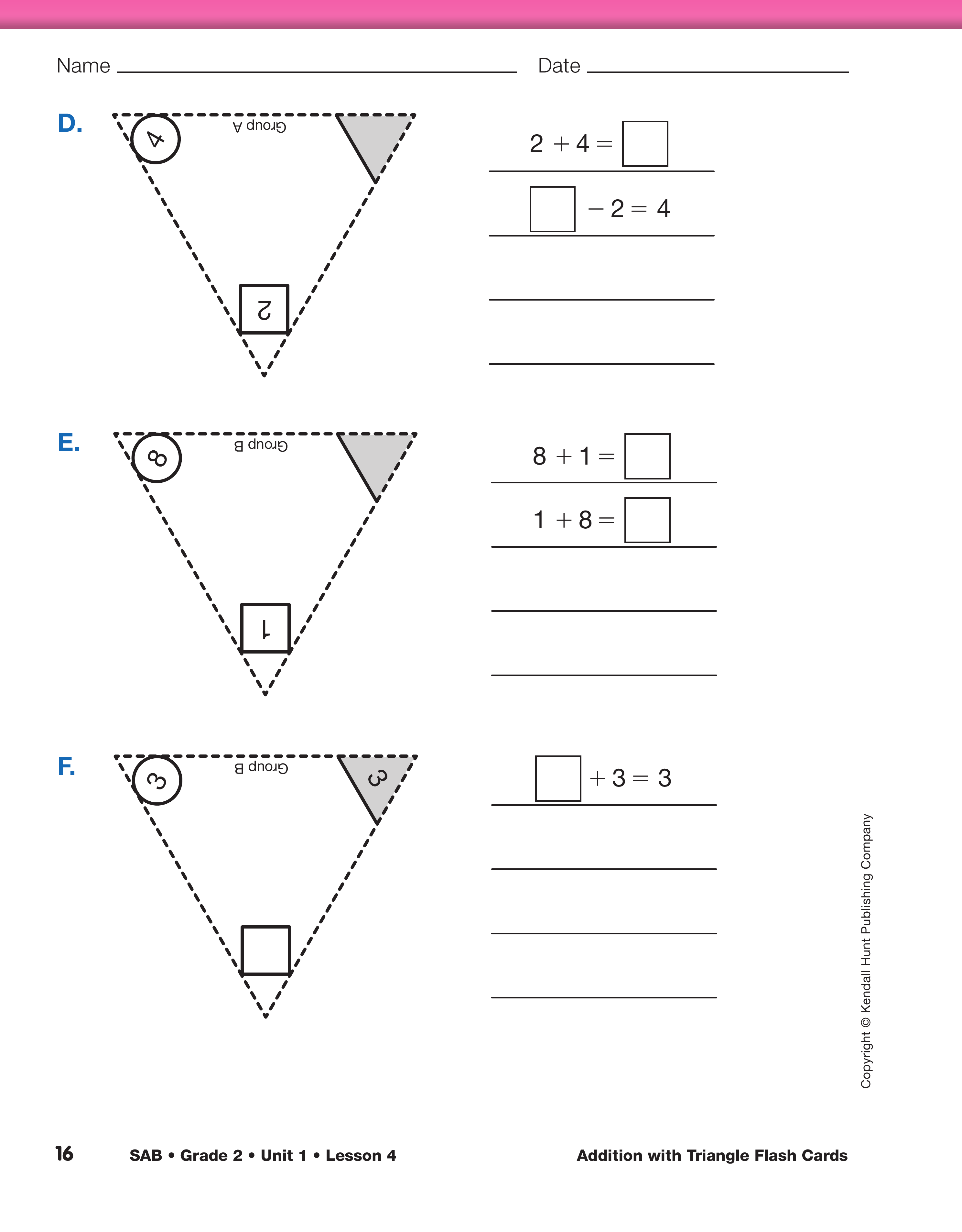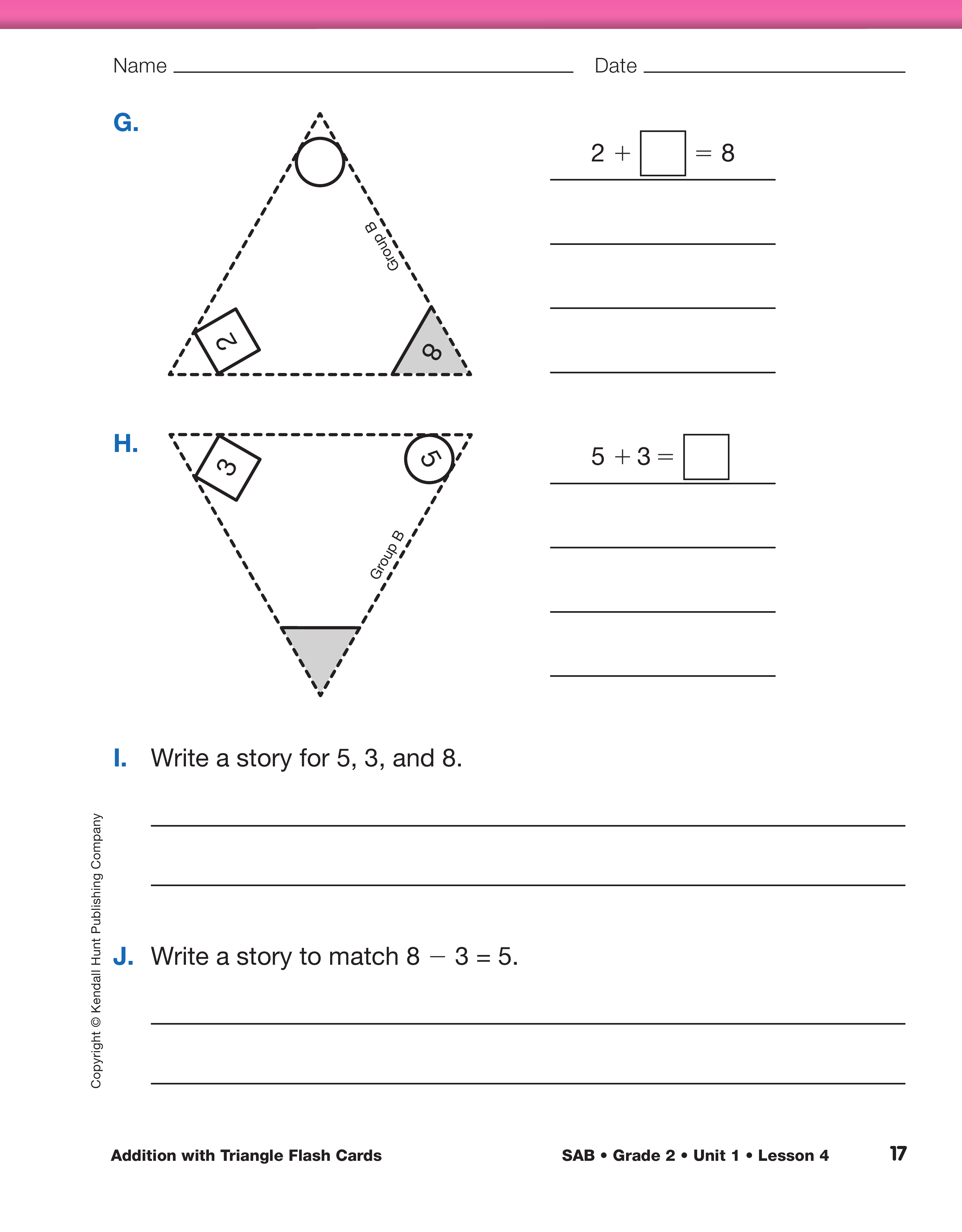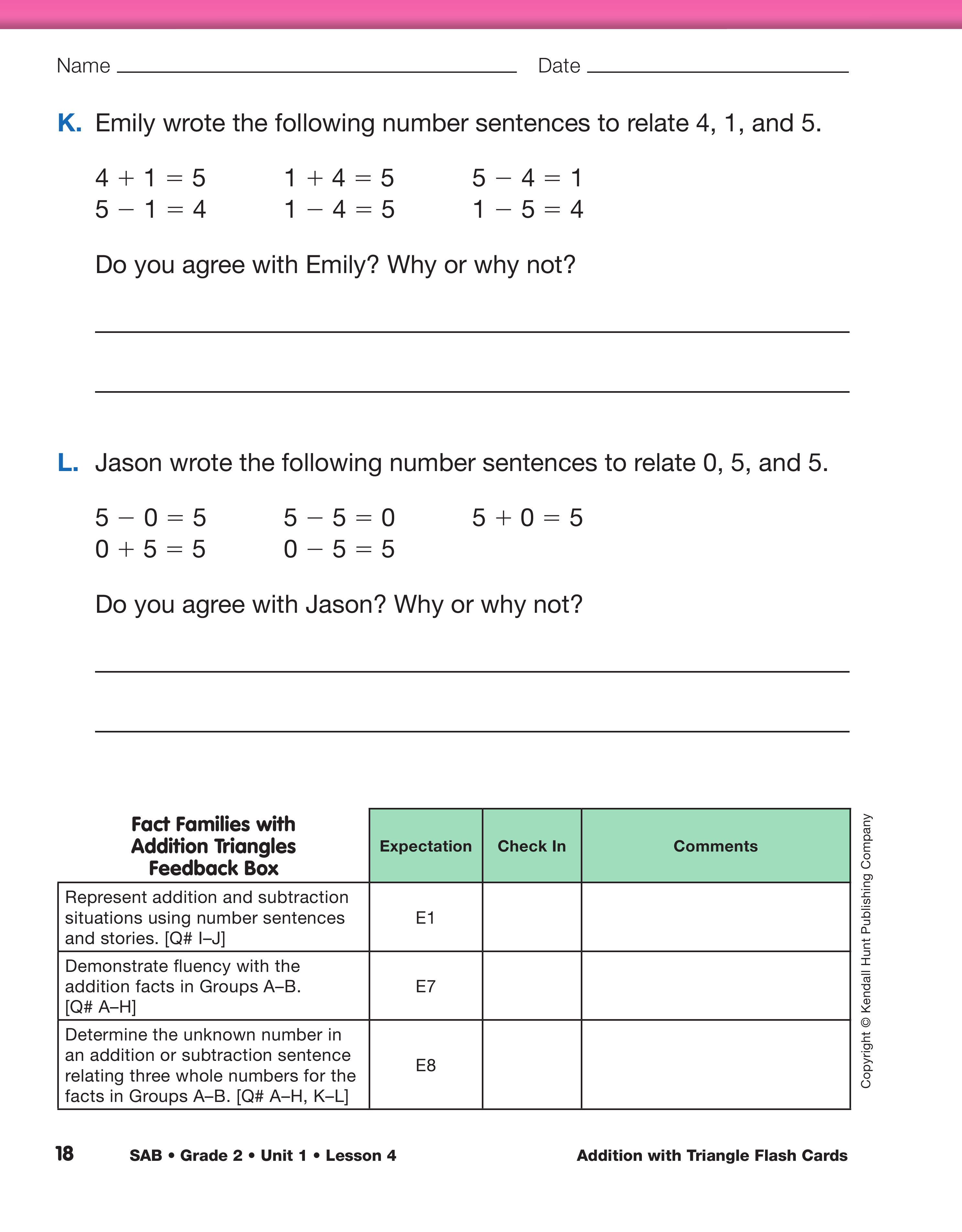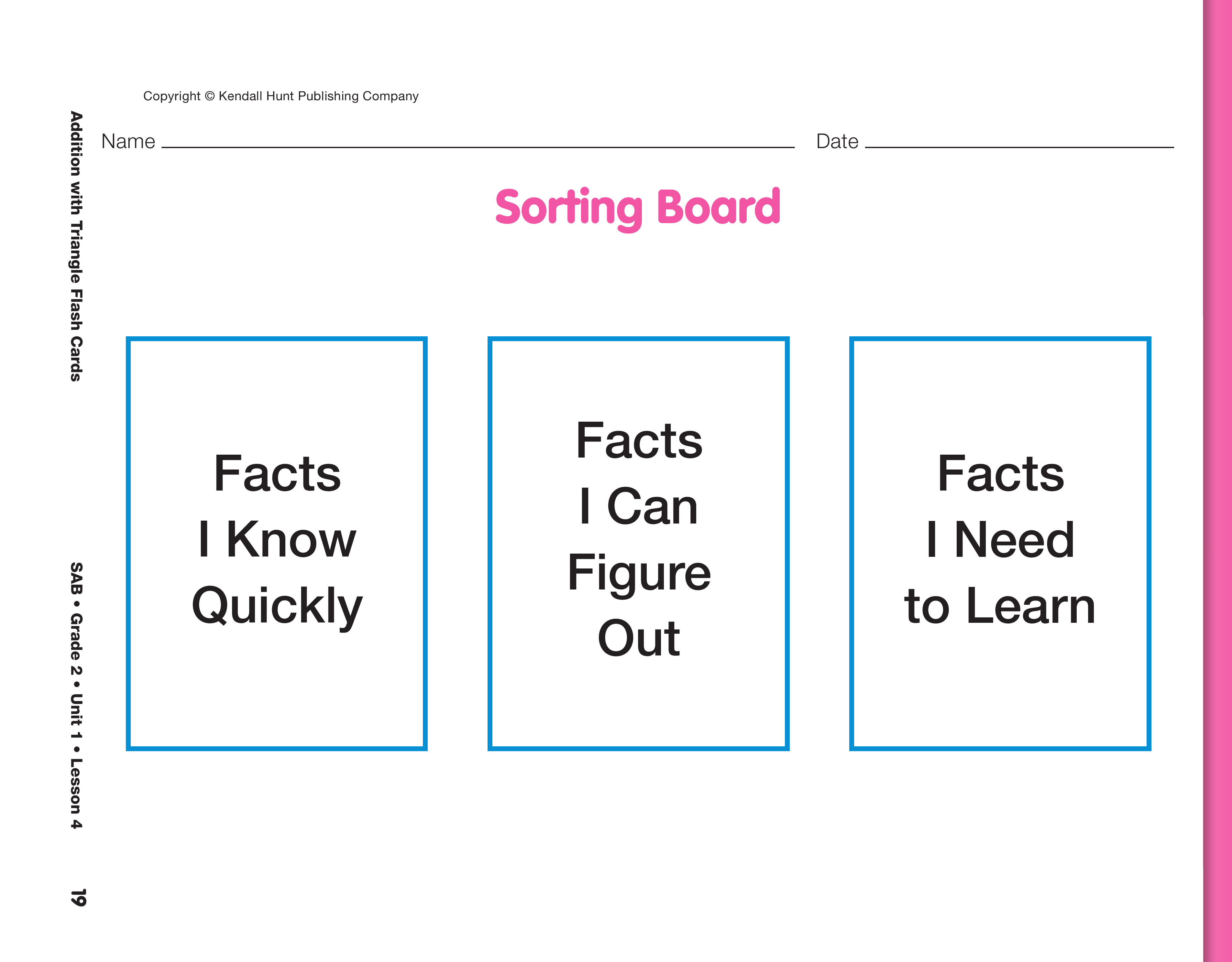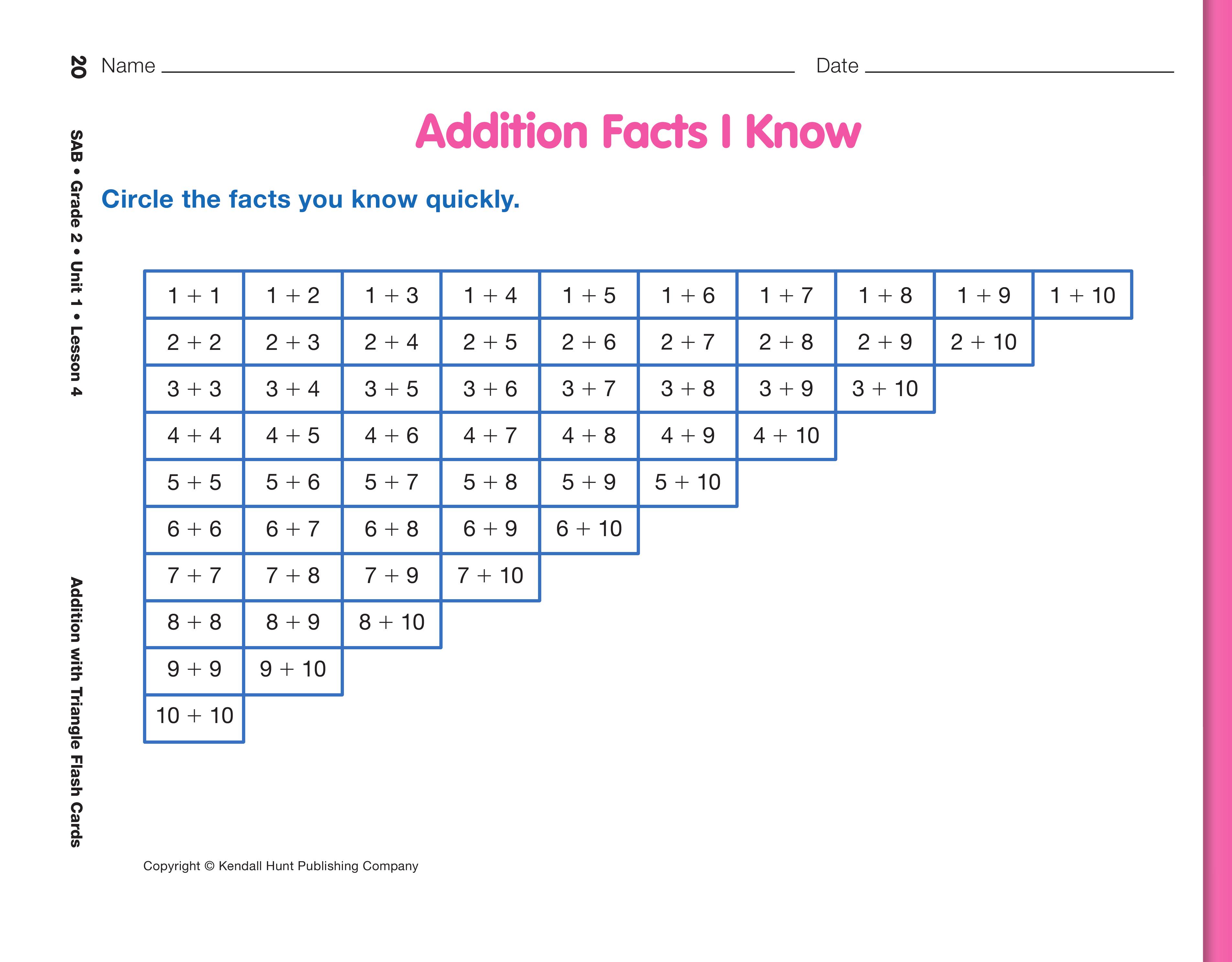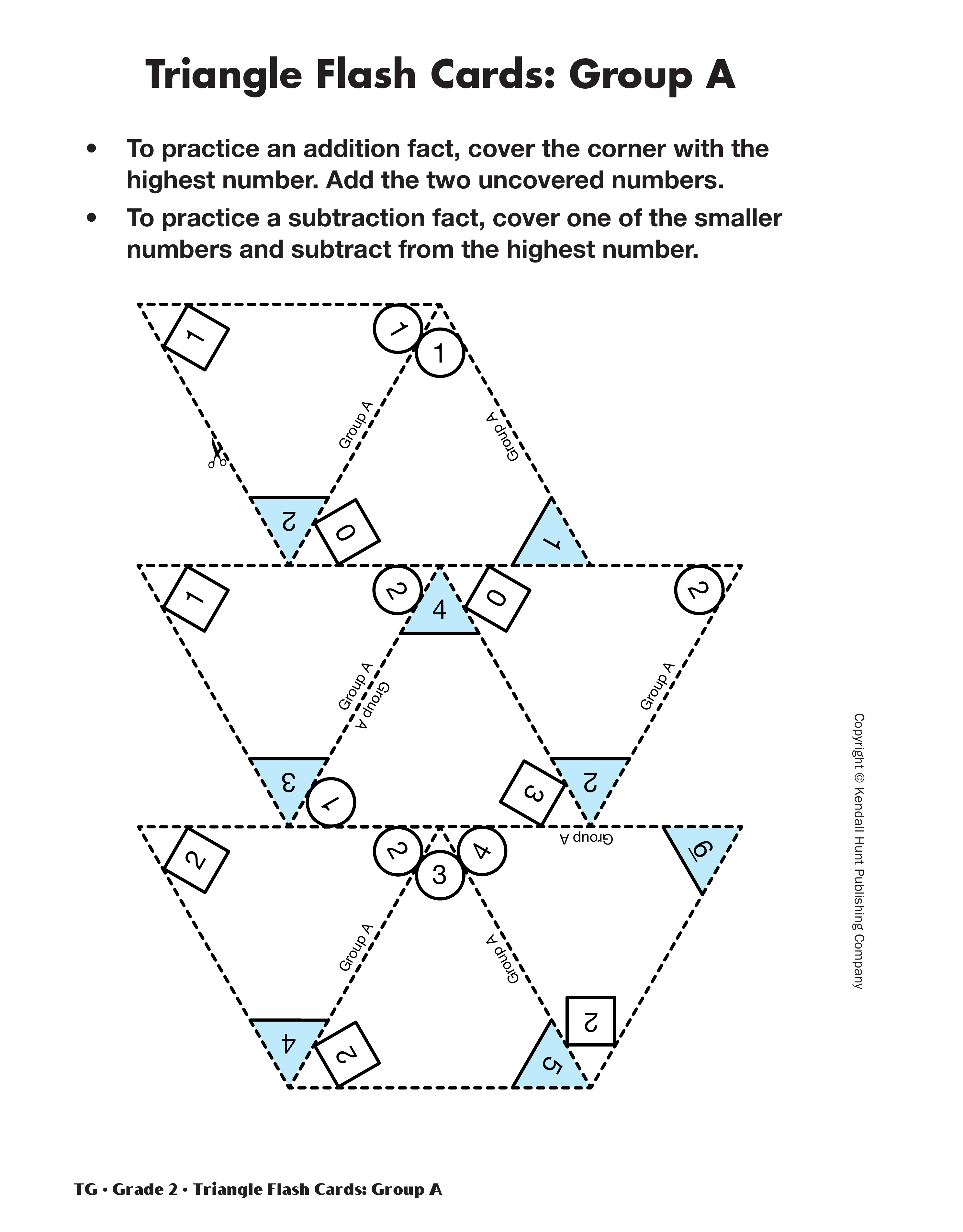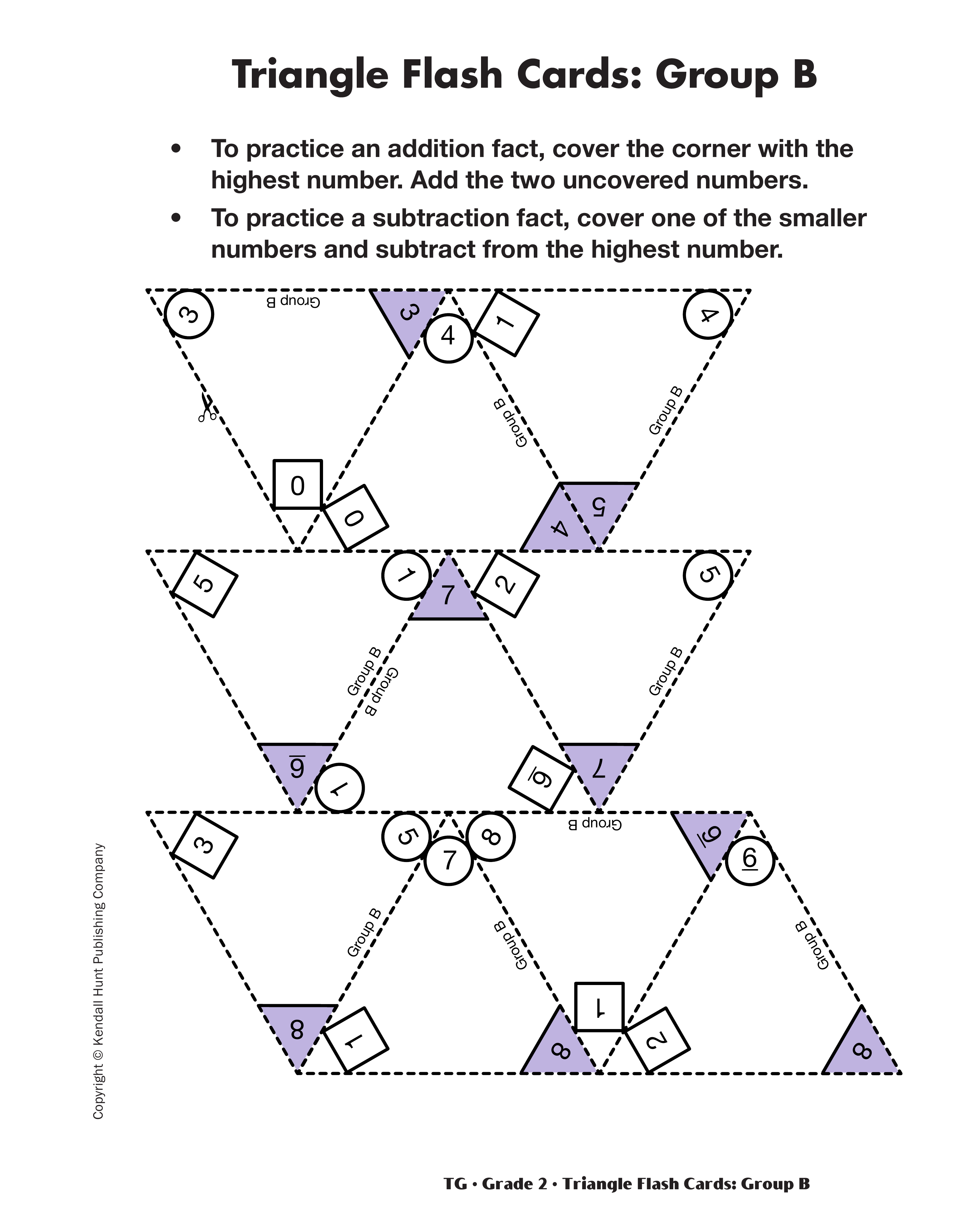Addition with Triangle Flash Cards
Est. Class Sessions: 1Developing the Lesson
Introduce Triangle Flash Cards. Display the Large Triangle Flash Card Master. Place three buttons on the corner with the circle. Place one button on the corner with the square. Slide the three-button pile to the third corner that is shaded. Record a 3 in the corner with the circle to indicate where the three buttons were originally placed. Repeat this process with the one button. Emphasize that the new pile shows the total number, the sum, of the buttons. Replace the four buttons with the number 4. Ask students to record a number sentence to show the action that took place. See Figure 1.
Find Fact Families on Triangle Flash Cards. Next place 1 button on the corner with the square and write the number 4 in the corner with the shaded triangle.
Ask:
Next place 1 button on the corner with the circle and write the number 4 in the corner with the shaded triangle.
Ask:
Write all the number sentences for the fact families that relate 4, 1, 3 on the board.
Then ask:
Display the Large Triangle Flash Card Master again. Repeat the discussion above with different sets of addends. (e.g., 2 and 3, 1 and 4, and 0 and 2). Ask students to write the number sentences for addition and subtraction situations represented on the Triangle Flash Card and tell a story that matches the number sentence.
Have students review fact families using the Fact Families with Addition Triangles pages in the Student Activity Book. These pages use some of the facts from Groups A and B. Begin by eliciting from the class what should be filled in for the numbers that are missing in the various positions in the triangles on the page.
Connect Stories to Number Sentence.
When students have finished, discuss the pages aloud and ask prompts similar to the following for a few more fact families:
Ask students to explain why there are only two number sentences in the fact family for the numbers shown on the triangle flash card in Question B. Students should notice that since the two addends are the same, there are only two number sentences that can show the relationships between the numbers.
Ask students to share the stories they wrote in Questions I and J.
Ask:
Ask students to share their responses to Questions K and L. In these questions, the fact families are listed incorrectly. This is a common error among students. Remind students to connect the number sentences to stories to make sense of them.
Check Fluency with Addition Facts. Distribute and ask students to cut apart the cards on the Triangle Flash Cards: Group A and the Triangle Flash Cards: Group B pages you copied from the Teacher Guide. Also ask students to remove the Sorting Board and Addition Facts I Know page from their Student Activity Book. Ask them to compare their flash cards to the flash card on the display. Tell students that they will focus on practicing the addition facts in Groups A and B. Tell students to find a partner. Then describe the steps they should use to practice their facts with the Triangle Flash Cards. These directions are also on the Triangle Flash Cards: Note Home Homework Masters.
- One partner chooses a flash card and covers the largest number (in the shaded corner).
- The other partner adds the numbers in the other corners.
- Using the Sorting Board page in the Student Activity Book, students work through the cards dividing them into three piles: Facts I Know Quickly, Facts I Can Figure Out, and Facts I Need to Learn.
- The student displaying the flash cards helps his or her partner find the facts from the first pile, Facts I Know Quickly, on his or her Addition Facts I Know chart so the student who is adding can circle the known facts easily. The cards from the first pile can now be clipped together and placed in an envelope for storage. They then practice again using cards from the last two piles.
- Partners switch roles and repeat the procedure. Make it clear to students that for each round, only the student adding records facts from the first pile.















